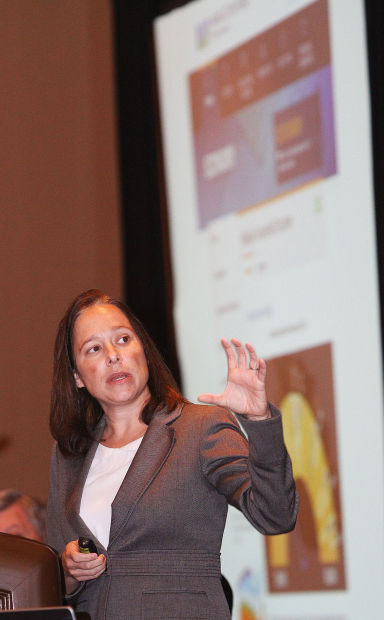A new interactive data website, launched Friday, seeks to inform strategies for improving the economy and quality of life in Southern Arizona, project developers say.
The website, Making Action Possible for Southern Arizona, is a result of a partnership between the University of Arizona Eller College of Management, the Community Foundation for Southern Arizona and the Southern Arizona Leadership Council.
The website’s visitors can explore detailed data sets — on measures like median home price, air quality and teen pregnancy rates — and compare their city’s performance to others in Arizona and the Western region. Colorful graphs automatically adjust as viewers click to add or remove cities they’re comparing, providing a clearer picture of social and economic conditions in Southern Arizona, project developers said.
“The main goal of this site is to make action possible,” said Clint Mabie, president and CEO of the Community Foundation. “It’s very hard to know where you’re going if you don’t know where you are.”
The site will also track the results of social initiatives to determine which are effective, and which are not, he said.
“It’s opening up the intellectual capital of the University of Arizona to the community,” Mabie said.
UA’s Eller College Economic and Business Research Center will continually update the data on 36 measurements to keep the information relevant and timely, organizers say.
“That’s key to our strategy,” said George Hammond, director of the Economic and Business Research Center in the Eller College at the UA.
“We want this to be an interesting and engaging website that people will visit often and learn something new when they do.”
There are 125 similar websites across the country, but most are more static and less dynamic than this one, with little analysis of the data points, developers said.
Southern Arizona’s version is a “leading example” of what these data hubs can be, said Jennifer Pullen, MAP project manager and research economist in the UA’s Eller Economic and Business Research Center.
The three dozen statistical measurements are broken into six categories: education, health and social well-being, infrastructure, quality of place, workforce and demographics.
“We hope that the site will facilitate conversation within our community to help better our community,” Pullen said. “We can see where our weaknesses are, and where our strengths are.”
The site’s developers are also open to the public’s suggestions of what’s working or not working on the site, and what information should be added, she said.





